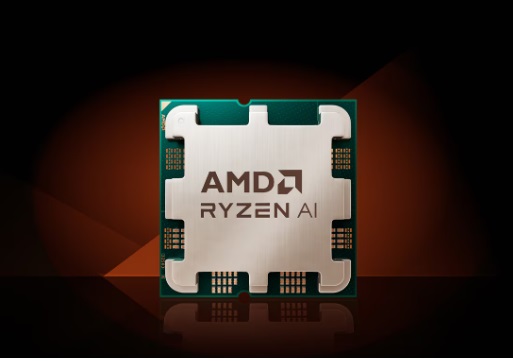AMD Stock Analysis

Advanced Micro Devices, Inc. (AMD) is a global leader in semiconductors, renowned for developing high-performance computing and graphics solutions for various markets, including personal computers, gaming consoles, data centers, and embedded systems. In recent years, AMD has experienced a significant resurgence, driven by innovative products and strong execution that have allowed it to challenge its main rival, Intel. This comprehensive AMD stock analysis focuses on the company’s Return on Equity (ROE), growth strategy, strengths, weaknesses, and the competitive landscape within the semiconductor industry.
What is ROE, and Why Does It Matter for AMD Stock?
Return on Equity (ROE) is a crucial financial metric that measures a company’s profitability relative to shareholders’ equity. A higher ROE generally indicates better financial performance and stronger returns for investors holding AMD stock.
AMD’s ROE: A Story of Turnaround and Growth
| Year | ROE (%) |
|---|---|
| 2013 | -27.7 |
| 2014 | -21.1 |
| 2015 | -51.7 |
| 2016 | -11.4 |
| 2017 | 14.9 |
| 2018 | 54.2 |
| 2019 | 19.3 |
| 2020 | 25.9 |
| 2021 | 35.0 |
| 2022 | 21.0 |
AMD’s ROE over the past decade reflects a remarkable turnaround. Initially marked by significant losses and negative ROE from 2013 to 2016, the company began to recover starting in 2017, driven by its Ryzen and EPYC processors. The peak ROE of 54.2% in 2018 showcased AMD’s strong profitability. Although recent years have seen a moderation in ROE, this is likely due to increased investments in research and development (R&D) and intense competition.
Understanding AMD: A Focus on High-Performance Computing
To assess AMD’s investment potential effectively, it’s essential to look beyond financial metrics and consider its strategic direction, strengths, weaknesses, and the competitive landscape.
AMD’s Vision: “To be the company that powers the next generation of computing.”
AMD aims to deliver high-performance computing solutions that empower customers across various sectors, including gaming, content creation, scientific research, and data center operations. The company emphasizes:
- CPU and GPU Innovation: Developing cutting-edge central processing units (CPUs) and graphics processing units (GPUs), including its Zen architecture for CPUs and RDNA architecture for GPUs.
- Data Center Growth: Expanding its footprint in the data center market with EPYC server processors, which offer competitive performance and value.
- Gaming and Consumer Focus: Providing high-performance gaming experiences through Radeon graphics cards and Ryzen processors for gaming PCs.
- Strategic Acquisitions: Enhancing its technology portfolio and market reach, exemplified by its acquisition of Xilinx, a leader in field-programmable gate arrays (FPGAs).
Strengths
- Product Innovation: AMD has a strong track record of innovation, particularly with its Ryzen and EPYC processors, allowing it to gain market share from Intel.
- Strong Performance: AMD’s CPUs and GPUs often outperform Intel’s offerings in key benchmarks, especially in multi-core performance and integrated graphics.
- Data Center Growth: AMD’s EPYC processors are gaining traction in the data center market, driven by rising demand for cloud computing and AI applications.
- Gaming Market Leadership: AMD’s Radeon GPUs power popular gaming consoles like the PlayStation 5 and Xbox Series X/S, bolstering its presence in the gaming market.
Weaknesses
- Dependence on the PC Market: Despite diversification, AMD remains significantly reliant on the PC market, which can be cyclical and sensitive to economic fluctuations.
- Intense Competition: AMD faces substantial competition from Intel and Nvidia, both of which have considerable resources and market influence.
- Manufacturing Dependence: AMD relies on third-party foundries, primarily TSMC, for chip manufacturing, which can create supply chain risks and potential capacity constraints.
AMD’s Competitors: The Semiconductor Landscape
AMD operates in a dynamic semiconductor market characterized by several key competitors:
- Intel: The largest CPU manufacturer, dominant in the PC and server markets, but facing challenges from AMD’s resurgence.
- Nvidia: The leading GPU manufacturer, known for high-performance graphics cards and its AI development platform.
- Qualcomm: A significant player in mobile chips, expanding its presence in PCs and automotive markets.
- ARM: A semiconductor design firm that licenses its technology to various manufacturers, providing an alternative to x86 processors.
AMD’s Key Projects
- Ryzen CPUs: A line of high-performance CPUs for desktops and laptops, competing directly with Intel’s Core processors.
- EPYC Server CPUs: Designed for data center applications, these processors are gaining market share due to competitive performance and total cost of ownership (TCO).
- Radeon GPUs: Graphics cards used in gaming consoles and PCs, offering high-performance graphics with the RDNA architecture.
- Xilinx Acquisition: Enhancing AMD’s technology portfolio by acquiring Xilinx, which expands into new areas such as AI, networking, and automotive.
AMD’s Future: Powering the Next Generation of Computing
The future of AMD hinges on its ability to innovate, compete effectively, and navigate the challenges within the semiconductor industry. Key factors influencing its success include:
- Technological Advancements: AMD needs to maintain its pace of innovation in CPU and GPU development, particularly in AI and high-performance computing.
- Data Center Growth: Expanding its presence in the data center segment is critical as it competes with Intel and Nvidia for market share.
- Gaming Market Dynamics: Adapting to trends such as cloud gaming, virtual reality, and the metaverse is essential for maintaining leadership in the gaming sector.
Is AMD (AMD) Stock a Good Investment?
AMD has demonstrated a remarkable turnaround driven by innovative products and strong execution. With a robust position in high-performance computing and the expanding data center market, the company is well-positioned for future growth. However, investors should carefully weigh the risks and opportunities inherent in the semiconductor industry, including competition, cyclicality, and rapid technological advancements.





